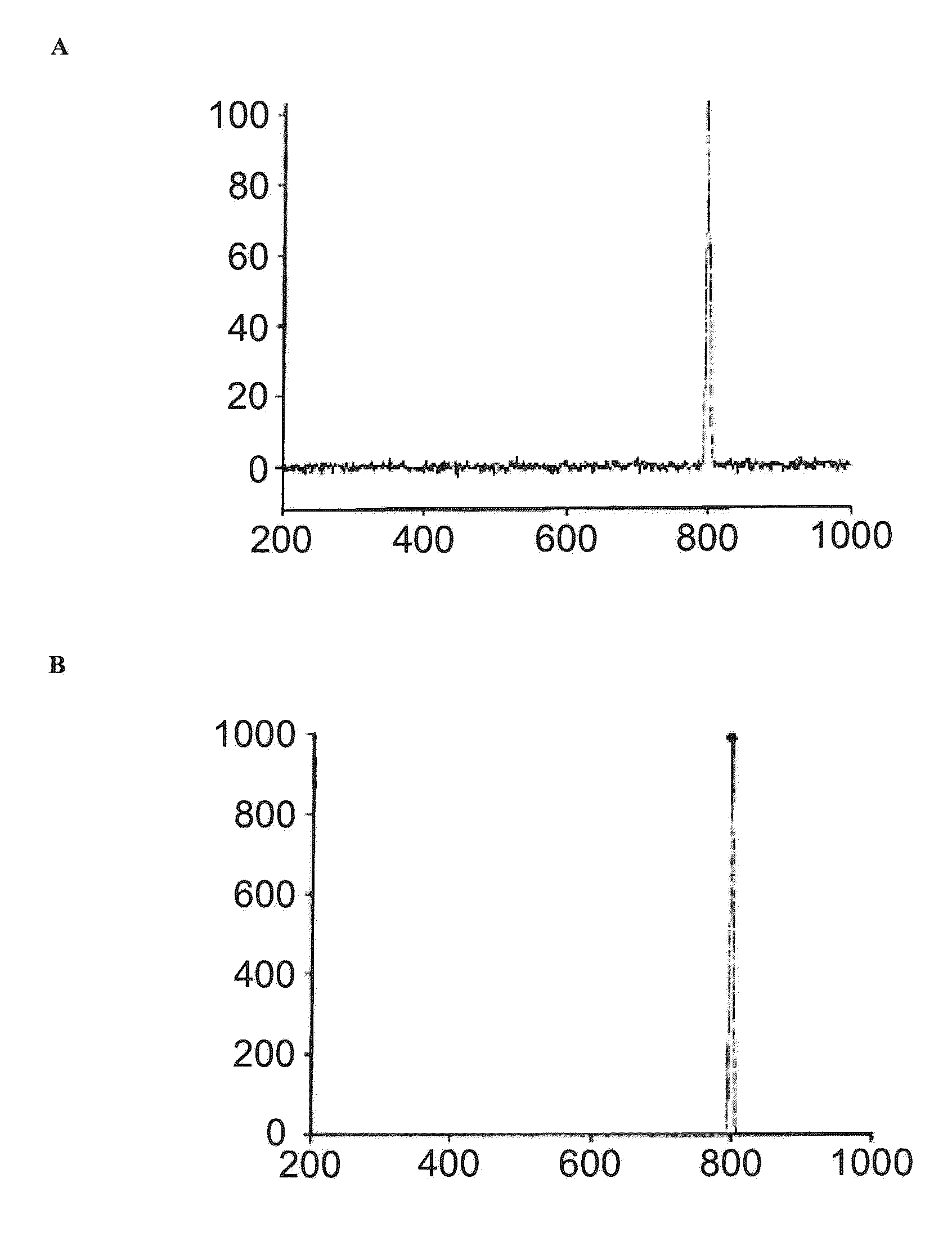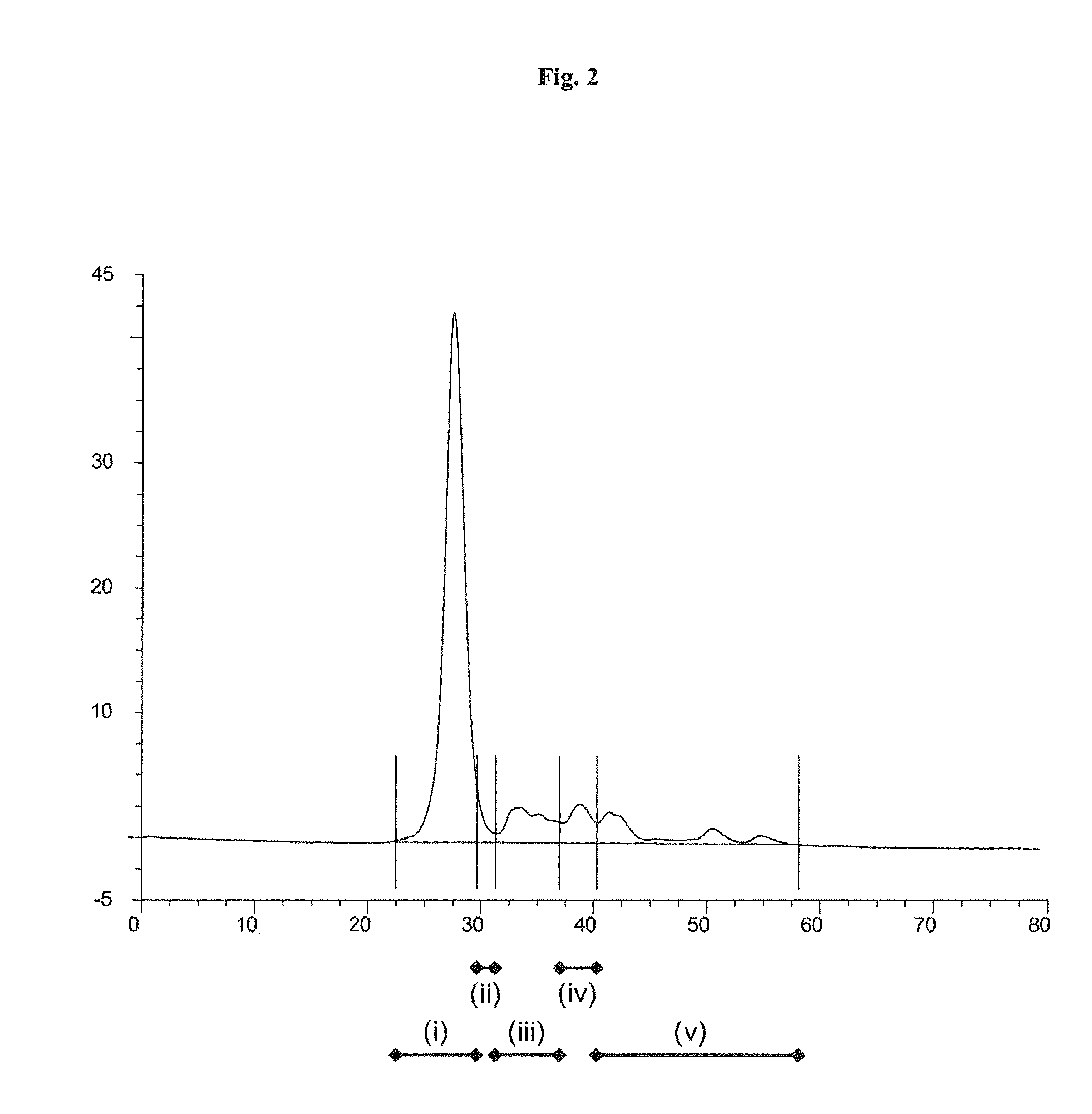Stabilization of thermolysin in aqueous solution
a technology of thermolysin and aqueous solution, applied in the field of biochemistry, can solve the problems of complete halt, weak precipitation of enzymes, and reduced enzymatic activity, and achieve the effects of reducing solubility, increasing solubility of thermolysin, and increasing solubility
- Summary
- Abstract
- Description
- Claims
- Application Information
AI Technical Summary
Benefits of technology
Problems solved by technology
Method used
Image
Examples
example 1
Preparation of Mixtures of an Aqueous Buffer and Thermolysin from a Thermoase Preparation
[0136]According to information provided by the manufacturer, about 60-65% [w / w] of the lyophilisate was NaCl. In addition, the lyophilizate contained about 5% [w / w] Na2SO4 (decahydrate). An amount in the range of about 30% [w / w] and about 35% [w / w] of the Thermoase lyophilisate used here as well in the Examples further below consisted of crude thermolysin (see also Example 2). All of the working steps described below were performed at a temperature of in the range of 2° C. and 8° C., if not indicated otherwise.
[0137]A volume of 8 l of the aqueous buffer (A) containing 2 M NaCl, 5 mM CaCl2, 20 mM HEPES, pH 7.5 was prepared. An amount of 200 g dry Thermoase lyophilisate was mixed with the aqueous buffer and the mixture was stirred continuously. However, no homogeneous mixture was obtained, the mixture remained turbid and never became entirely clear. About 60 min following the addition of the lyoph...
example 2
Stability of Solutions of Thermolysin with a Reduced NaCl Concentration
[0143]Firstly, a solution of Thermoase lyophilisate was prepared using buffer (B) and the three-step procedure as described in Example 1. In a subsequent step, the solution was diafiltrated, wherein the buffer of the liquid composition was changed to 20 mM HEPES, 5 mM CaCl2, 170 mM NaCl, pH 7.5. Surprisingly, thermolysin remained stabilized, i.e. the diafiltrated solution remained homogeneous for 5 hours and even longer than 5 hours.
[0144]HPLC analysis of the solution of the Thermoase lyophilisate was performed before and after diafiltration using HPLC with a SUPERDEX 75 pg 10 mm / 300 mm GL column (GE Healthcare Bio-Sciences AB) as the stationary phase. The mobile phase was an aqueous buffer containing 200 mM NaCl, 1 mM CaCl2, 50 mM HEPES, pH 7.5. Sample volumes were 50 μl each. The flow rate was 0.5 ml / min, each HPLC run was performed for 80 min. The detection unit was a UV-Vis absorbance detector operated at 280...
example 3
Stability of Thermolysin Stock Solutions with a Reduced NaCl Concentration at Different Temperatures
[0154]Aliquots of the two stock solutions of thermolysin with the concentrations of (i) 5 mg / ml and (ii) 2.5 mg / ml obtained according to the procedure of Example 2 (i.e. including diafiltration) were incubated at different temperatures. In intervals of 30 min turbidity was assessed by visual inspection and measurements as described in Example 9. The time of exposure to the respective temperature before a solution became turbid was recorded. The results are summarized in Table 10.
[0155]So far, all of the working steps were performed at 8° C. or lower, i.e. at temperatures in the range of 2° C. and 8° C. Both stock solutions remained clear throughout the process.
[0156]
TABLE 10Thermolysin concentrations, temperatures and time duringwhich the thermolysin solution remained clearConcentration of thermolysin in20 mM HEPES, 5 mM CaCl2,170 mM NaCl, pH 7.52.5 mg / ml5 mg / mlTime of permanency ofTe...
PUM
| Property | Measurement | Unit |
|---|---|---|
| concentration | aaaaa | aaaaa |
| concentration | aaaaa | aaaaa |
| concentration | aaaaa | aaaaa |
Abstract
Description
Claims
Application Information
 Login to View More
Login to View More - R&D
- Intellectual Property
- Life Sciences
- Materials
- Tech Scout
- Unparalleled Data Quality
- Higher Quality Content
- 60% Fewer Hallucinations
Browse by: Latest US Patents, China's latest patents, Technical Efficacy Thesaurus, Application Domain, Technology Topic, Popular Technical Reports.
© 2025 PatSnap. All rights reserved.Legal|Privacy policy|Modern Slavery Act Transparency Statement|Sitemap|About US| Contact US: help@patsnap.com



